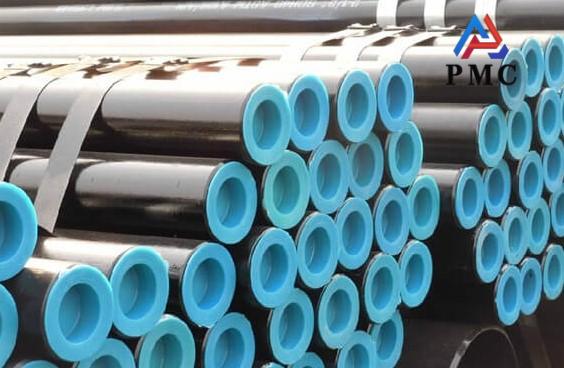
Similarities and Differences between Seamless Carbon Steel Pipe and Seamless Pipe
Seamless pipe is a rolled steel pipe without welds, made of hot-rolled steel, or when necessary, the hot-rolled pipe is cold-processed to obtain the necessary shape, size and performance. Its specifications are expressed by the outer diameter of the pipe (mm) multiplied by the wall thickness (mm). Common production processes include hot extrusion, cold pressing, oblique punching, cold rolling, pressing, cold drawing, etc.
Seamless carbon steel pipe belongs to a category of seamless pipes. Its main components are iron and carbon, and it also contains a small amount of silicon, manganese and other elements. According to the different carbon content, seamless carbon steel pipes can be divided into low carbon steel seamless pipes, medium carbon steel seamless pipes and high carbon steel seamless pipes.
Similarities: Seamless common advantages
Seamless carbon steel pipes and seamless pipes have the key feature of being seamless, so they have many common advantages. They both have hollow sections, which give them economical section characteristics. Compared with solid steel, they are lighter in weight when the bending and torsional strength are the same. When manufacturing structural parts and mechanical parts, they can reduce the amount of material used, thereby reducing costs. In the field of fluid transportation, both of them perform well.
When transporting fluids such as oil, natural gas, coal gas, and water, the seamless structure can effectively avoid leakage problems and ensure the safety and stability of transportation, and is widely used in energy transportation pipelines. In the construction industry, they are used to build structures such as steel scaffolding, and provide reliable support for construction with their high strength and stability. In the field of machinery manufacturing, they can withstand greater pressure and torque when making parts such as automobile drive shafts and rolling bearing rings to ensure the normal operation of the machinery.

Differences: Differences in materials and performance
The difference between seamless carbon steel pipes and seamless pipes is first reflected in the material. Seamless pipes cover a wide variety of material types, including carbon steel, alloy steel, stainless steel, high-temperature alloys, etc. Seamless pipes of different materials have their own unique properties and applicable scenarios due to different element compositions and ratios.
In terms of performance, seamless carbon steel pipes also have certain limitations. In terms of corrosion resistance, ordinary seamless carbon steel pipes are prone to rust and corrosion in humid, acidic and alkaline corrosive environments, and their service life will be shortened. For example, in the corrosive medium transportation pipelines of chemical enterprises, seamless carbon steel pipes may not be able to meet the needs of long-term stable use. However, stainless steel seamless pipes, due to the addition of elements such as chromium and nickel, show excellent corrosion resistance in almost all environments and are widely used in industries with high corrosion resistance requirements such as chemical, food, and medicine.
In terms of high temperature resistance, the mechanical properties of seamless carbon steel pipes will decrease at high temperatures, limiting their application in high temperature environments. High temperature alloy seamless pipes can maintain good mechanical properties and anti-oxidation and corrosion resistance under high temperature conditions, and are often used to manufacture key components of high temperature equipment such as gas turbines and aircraft engines.
How to choose?
In practical applications, the choice of carbon steel seamless pipe or other seamless pipe should be determined according to specific needs and usage scenarios. If it is a general building structure, ordinary fluid transportation, and is more sensitive to cost, carbon steel seamless pipe is a good choice. For example, for ordinary urban water supply networks and building scaffolding, low-carbon steel seamless pipes can meet the needs and are relatively low in cost.
If the application scenario has high requirements for corrosion resistance, such as food processing and chemical industries, which need to transport corrosive media, stainless steel seamless pipes are more suitable, which can ensure the long-term stable operation of the pipeline and avoid leakage and damage caused by corrosion. Working in high temperature environment, such as aircraft engines, gas turbines and other equipment, high temperature alloy seamless pipes can ensure the normal operation of the equipment with their good high temperature performance.
In mechanical manufacturing, if you need to manufacture parts that withstand greater pressure and torque, choose the appropriate carbon steel seamless pipe or alloy steel seamless pipe according to the specific strength and toughness requirements. In short, only by clarifying the use requirements and comprehensively considering the performance and cost of the material can you select the most suitable seamless pipe.
Read more: Seamless Carbon Steel Pipe vs. Welded Steel Pipe: Performance Differences


